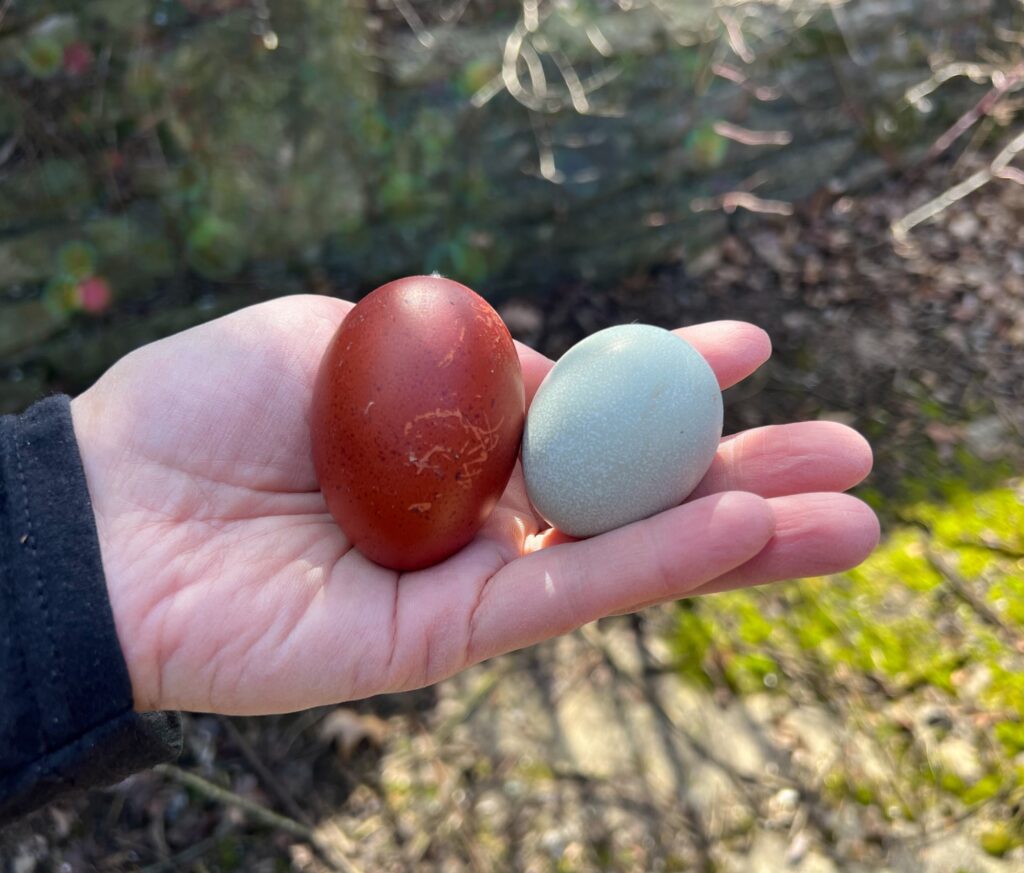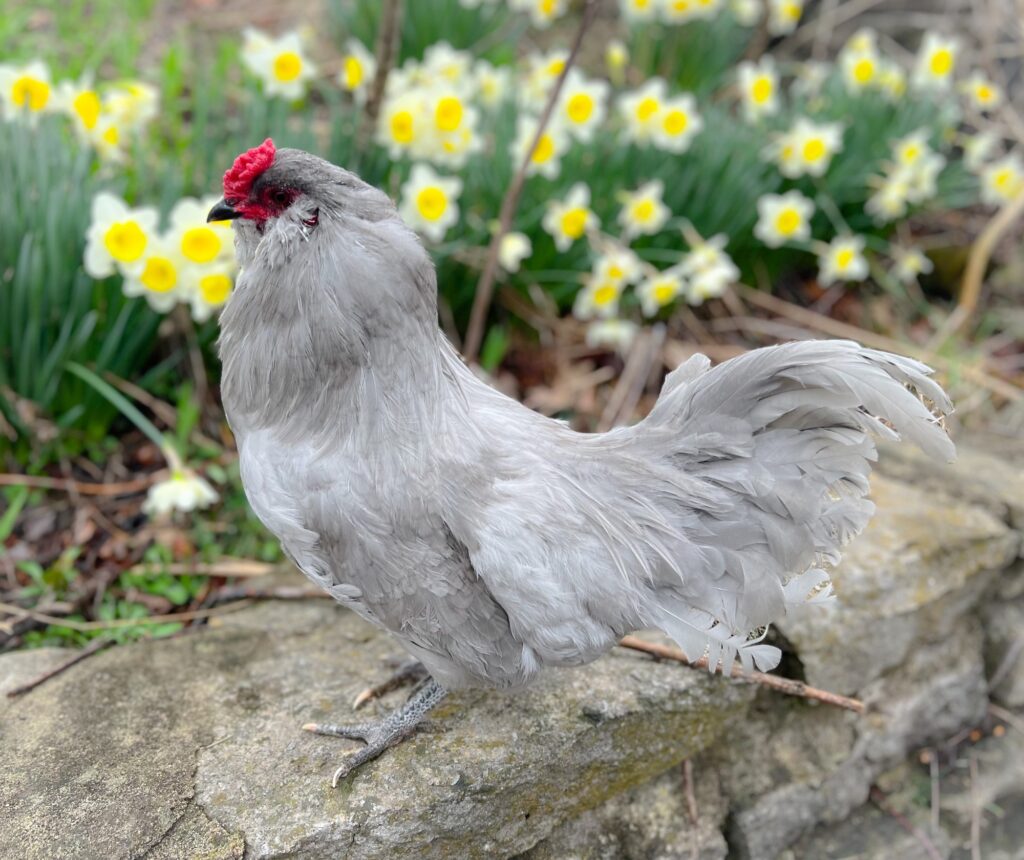It’s technically not spring yet, but the sun is shining, the birds are singing, and the chickens are laying. The trickle of eggs from winter has grown into a steady stream and – always exciting – our second generation Lavender Ameraucana pullets have laid their first eggs!

Growing out layers takes patience. These Ameraucanas hatched in September of last year, so they reached point of lay (POL) in about 5 and a half months. For the first month or so, they’ll lay small (“pullet”) eggs, which will gradually grow in size until they reach their “mature” size. Ameraucanas lay a medium-sized egg on the blue-green spectrum.
So far, we’ve found this breed to be striking, hardy, and generally mellow. Their small pea combs are a boon in our climate, where the winter cold (and this winter saw some almost unfathomably cold temperatures) can quickly cause frostbite on large combs. Since Aneraucanas are a medium-sized bird, they also don’t eat as much feed – which just keeps getting more expensive! – as a larger-framed bird, like an American Bresse or a Black Copper Marans, or need quite as much coop or run space.

With multiple pullets laying, I’ve been able to collect enough eggs to set the first group in the incubator. While the common wisdom around hatching pullet eggs seems to be that you should avoid it, I’ve found it to be worthwhile – though the eggs are smaller, viability may still be high and chicks hatched from pullet eggs in the past may have been a bit smaller at hatch due to the egg’s size constraints, but were otherwise normal and grew to normal size.
This “test” batch of eggs will also allow me to check fertility. We have a high rooster-to-hen ratio in our two breeding flocks, so I’m hoping that fertility will also be high. If all goes well, there should be a new generation of lavender fluffballs on the farm in mid-March!

Are you wondering what the difference is between Lavender Ameraucanas and Blue Ameraucanas? It’s less about the color of their plumage than you might think. Lavender Ameraucanas are also called “Self Blue” Ameraucanas; when you take a Lavender Ameraucana rooster and breed him to a Lavender Ameraucana hen, all of the offspring will also be Lavender. On the other hand, if you breed a Blue Ameraucana to another Blue Ameraucana, you will get blue, black, and splash (BBS) offspring: 50% will be blue, 25% will be black, and 25% will be splash. Geek out on the genetics of the blue feathering gene here.
Personally, I like the variety of BBS birds, but knowing that every chick hatched from Lavender Ameraucana eggs will also be lavender has its appeal, too. The Lavender Ameraucanas have been a two year project to get us to this point, so watching these birds grow to maturity and, finally, reward us with their precious eggs feels like we’ve reached the top of the mountain. Stay tuned for more on how the first incubation of the year progresses!
